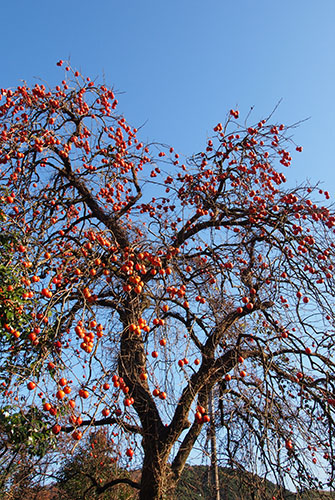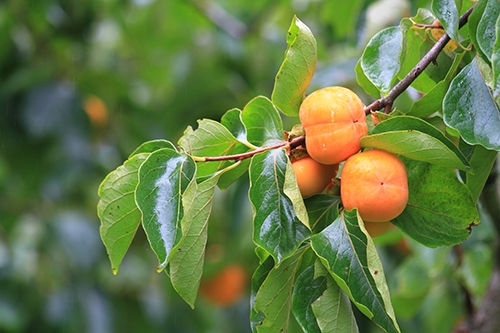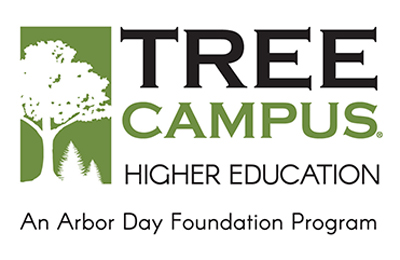Persimmon
Diospyros virginiana
The Persimmon, often called simmon, is a well-known tree throughout the southern United States. It is usually of medium size, rarely exceeding 60 feet in height and with a trunk diameter to 18 inches. It is native throughout Florida, often in open, sandy woods, although it also occurs in hammocks, rich bottom lands and old fields.
The bark of old trees is almost black and is separated into thick, nearly square blocks, much like that of the Black Gum. The leaves are alternate, oval, entire, three to six inches long, dark green and shining above and paler beneath.
Small flowers, which appear in May, are yellowish and somewhat bell-shaped. Male and female flowers are borne on separate trees: the former, in clusters of two or three; the later, solitary. They are visited by many insects.
The fruit is a pulpy, round, orange-colored berry, one and one-half inches or more in diameter and containing several flattened, hard, smooth seeds. The pulp is strongly astringent while green, but often quite sweet and delicious when ripened.
The wood is hard, dense, heavy and strong. The heartwood is brown or black, and the wide sapwood is white or yellowish. It is particularly valued for shuttles, golf-stick heads, and similar special uses, but is not of sufficient commercial use to make it an important timber tree.
Visit our Tree Campus homepage for more information.
Tree information provided with permission of the Florida Department of Agriculture and Consumer Services for more information visit https://www.fdacs.gov/.




